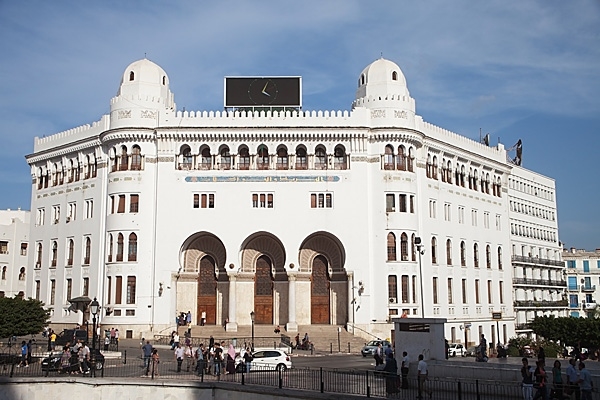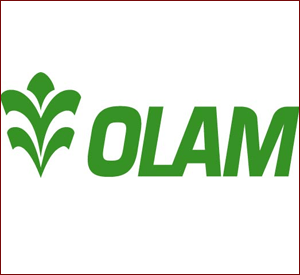Algiers: Algeria plans industrial zones
2013/10/11

Improving increase in the non-oil sector has long been a focus for Algeria’s government, with the majority recent push coming in the form of the planned construction of eight pilot industrial zones next year.
The industrial parks represent the initial wave of a broader national initiative which will see 42 dedicated zones established in 34 of Algeria’s provinces by 2017, part of a drive to stimulate investment and innovation across the manufacturing sector.
The project, led by the Ministry of Industry, Small and Medium-sized Enterprises, and Investment Promotion, has a particular focus on generating industrial activity in sparsely populated and underserved areas, inclunding the Hauts Plateaux and southern regions, to help strengthen employment and revenues outside of the larger urban areas.
Public tender launched
Authorities launched a series of public tenders in April and May, calling for firms to carry out development studies and prepare the eight designated sites for construction work. Bids for the zones are currently being reviewed by the National Agency for Intermediation and Land Regulation (Agence Nationale d’Intermédiation et de Régulation Foncière, ANIREF), with the initial parks expected to be operational early next year.
Developing Algeria’s industrial sector represents an economic priority for the government, with agro-industry, mechanics, construction materials and pharmaceuticals part the segments targeted.
The new industrial parks should help relieve the shortage of land available for development, which represents a major issue for the sector. Hassiba Mokraoui, the director-general of ANIREF, has indicated that the agency is keen to target partnerships between foreign and local firms for the projects, as part of a bid to encourage knowledge transfers and promote the development of Algerian construction firms and technical consultancies.
The pilot sites cover a total of 2500 ha, with four located towards the north, in Tizi Ouzou, Relizane, Ain Temouchent and Mostaganem. Three of the facilities will be developed in Batna, Médéa and Djelfa, across the semi-arid Hauts Plateaux region, while the eighth park is earmarked for Ouargla, in the desert south, where industrial and other economic infrastructure is least developed.
Long-term plans
Around AD88bn (€17.9bn) is expected to be channelled into the industrial zones over a five-year period before the initiative is fully completed, according to the national press agency.
Twenty-seven of the 42 parks will be located in the northern coastal area, close to a lot of of Algeria’s large cities, where economic activity is highest. The Hauts Plateaux region will from presently on home ten of the industrial zones, while the remaining five will be located in the south. A lot of of the parks will have an industry-specific focus, such as the Sidi Bel Abbès site, which will target electronics and Blida, earmarked for agro-industry development.
Public tenders for technical studies and land development are expected to be launched in the near term for nine additional parks, which represent the next phase of the project. The sites will cover a total of 2526 ha and will be built in M’sila, Sidi Bel Abbès, Jijel, Adrar, Bechar, Biskra, Sétif, Saida and Naama.
Tenders for the remaining 25 facilities will be announced in the coming years as public land is made available. In August, ANIREF officials indicated that the agency may consider expanding the programme beyond the initial plan to build 42 parks in response to growing requests for land, which outnumber the available space in existing production zones.
Request for land growing
Under the country’s industrial strategy, firms apply for land permits at the provincial level from Committees for Localisation Assistance, Investment Promotion and Land Regulation (CALPIREF), which are overseen by ANIREF.
Request for industrial land has increased in recent months according to the agency. Requests processed by CALPIREF committees in the initial half of 2013 reached 4176, marking a rise of 53% over the same period last year. ANIREF said industrial projects examined in the initial six months of 2013 could lead to investment totalling AD112bn (€22.81bn), with the potential to create 50,000 jobs.
The anticipated rise in industrial activity bodes well for the government’s development plans. However, the National Statistics Office (ONS) industrial production index fell 0.5% in the initial quarter of 2013 year-on-year, highlighting the challenges which the sector faces.
An ONS public opinion survey conducted part 740 industrial firms from both the public and private sectors cited a number of problems that may well have contributed to the slowdown. Alongside interruptions to the supply of primary materials and power, a lack of trained human resources and Algeria’s restrictive environment for foreign investment were as well mentioned as hurdles to development.
The industrial sector will continue to face such challenges in the near term, particularly in central and southern regions. However, efforts to relieve access to land for industrial investment should help to create a new outlet for the growing number of projects in the pipeline.
- Related Articles
-
UNWTO: International tourism – strongest half-year results since 2010
2017/09/09 Destinations worldwide welcomed 598 million international tourists in the initial six months of 2017, some 36 million additional than in the same period of 2016. At 6%, increase was well above the trend of recent years, making the current January-June period the strongest half-year since 2010. Visitor numbers reported by destinations around the world reflect strong request for international travel in the initial half of 2017, according to the new UNWTO World Tourism Barometer. Worldwide, international tourist arrivals (overnight visitors) increased by 6% compared to the same six-month period last year, well above the sustained and consistent trend of 4% or higher increase since 2010. This represents the strongest half-year in seven years. -
H.E. President Alassane Ouattara and the theme of “Accelerating Africa’s Path to Prosperity
2017/09/09 This year, under the leadership of H.E. President Alassane Ouattara and the theme of “Accelerating Africa’s Path to Prosperity: Growing Inclusive Economies and Jobs through Agriculture”, the African Green Revolution Forum (AGRF) 2017 is shaping up as a premier platform to showcase ongoing evolution in Africa’s agricultural transformation schedule and to scale up the political, policy, and financial commitments needed to achieve the Malabo Declaration and the world development schedule around the Sustainable Development Goals (SDGs). Following the launch of the landmark annual Africa Agriculture Status Statement (ASSR) at the AGRF taking place in Cote d’Ivoire from 4-8 September 2017, the major conclusion centres around the power of entrepreneurs and the free market in driving Africa’s economic increase from food production. This is owing to the fact that a lot of businesses are waking up to opportunities of a rapidly growing food market in Africa that may be worth additional than $1 trillion each year by 2030 to substitute imports with high price food made in Africa. -
International Arrivals To Africa Reach More Than 18 Million In 2017
2017/09/09 Market Research Company Euromonitor International revealed before this week the key trends shaping travel and tourism in Africa at the 41st Annual World Tourism Conference in Kigali, Rwanda. According to Euromonitor International’s new data, international arrivals to Africa grew by 6.5 % in 2017, to reach 18,550 million, up from 16,351 million in 2012. Key markets such as South Africa, Kenya, Nigeria, Mozambique, Cameroon, Mauritius and Tanzania accounted for 70 % of international trips to the Sub-Saharan African region. -
Africa: USA-Africa - No Policy? Bad Policy? or Both?
2017/08/30 "Africa is terra incognita for the Trump Government: a continent it cares little - and understands even less - about. With no dyed-in-the-wool Trumpian Africa hands available, the government appears ready to cede Africa policy making to career civil servants and a few mainstream Republican appointees." - Matthew T. Page The headline to Page's article in Quartz Africa states that "Donald Trump could be getting his US-Africa policy right by simply not having one." His view is actually additional nuanced, in judging that no policy would likely be only "less bad" than explicitly "bad policy" that may result from better White Home interest in Africa. -
Veteran Diplomat Named 'Acting' State Department Africa Chief
2017/08/30 Donald Yamamoto, who has extensive diplomatic experience in Africa inclunding two tours as a U.S. ambassador, will take office as Acting Assistant Secretary of National for Africa on 5 September. He is the second career official tapped for a senior policy position on Africa in the Trump government.Donald Yamamoto, who has extensive diplomatic experience in Africa including two tours as a U.S. ambassador, will take office as Acting Assistant Secretary of State for Africa on 5 September. He is the second career official tapped for a senior policy position on Africa in the Trump administration. Senior CIA analyst Cyril Sartor was hired as senior director for Africa at the National Security Council earier this month Key Africa jobs at the Defense Department (DOD) and the U.S. Agency for International Development remain vacant. "Having someone with Don Yamamoto's experience in that post is very significant," Mel Foote, Constituency for Africa president, told AllAfrica. "As Africa confronts a lot of challenges, we want to see responsible U.S. engagement in partnership with African governments and civil society organizations."
-
- Algiers News
-
- AFGHANISTAN: UNWTO: International tourism – strongest half-year results since 2010
- BOTSWANA: Why governments need to support the financial sector to meet the unserved needs of smallholder farmers
- BOTSWANA: International Arrivals To Africa Reach More Than 18 Million In 2017
- BOTSWANA: Africa: USA-Africa - No Policy? Bad Policy? or Both?
- BOTSWANA: Africa: U.S. State Department To Get Experienced Diplomat in Key Africa Post
- BOTSWANA: Africa’s economic growth in 2016 was driven by East Africa
- Trending Articles
-
- SOUTH AFRICA: Nigeria and South Africa emerge from recession
- BAHRAIN: Bahrain issues new rules to encourage fintech growth
- ARUBA: Director of Tourism Turks and Caicos after Irma: Tourism, visitors, hotels current status
- ANGOLA: Angola: Elections / 2017 - Provisional Data Point Out Qualified Majority for MPLA
- WORLD: How fair is our food? Big companies take reins on sourcing schemes
- CHINA: Russian firm seals energy exploration deal to drill South African shelf




.gif?1356023993)



